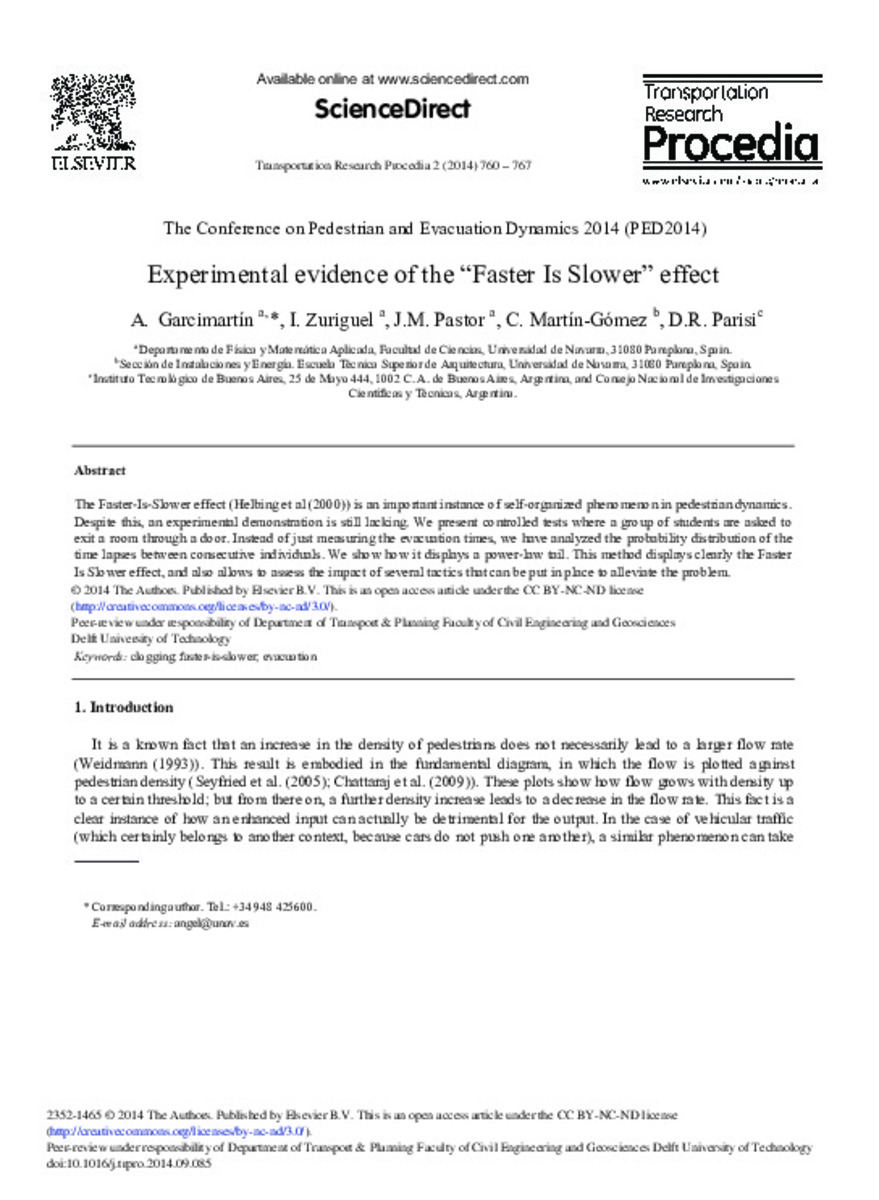Full metadata record
| DC Field | Value | Language |
|---|---|---|
| dc.creator | Parisi, D.R. (D. R.) | - |
| dc.creator | Martín-Gómez, C. (César) | - |
| dc.creator | Pastor-Gutierrez, J.M. (José Martín) | - |
| dc.creator | Zuriguel-Ballaz, I. (Iker) | - |
| dc.creator | Montero, Á. (Ángel) | - |
| dc.date.accessioned | 2014-10-10T11:45:34Z | - |
| dc.date.available | 2014-10-10T11:45:34Z | - |
| dc.date.issued | 2014 | - |
| dc.identifier.citation | Transportation Research Procedia | es_ES |
| dc.identifier.issn | 2352-1465 | - |
| dc.identifier.uri | https://hdl.handle.net/10171/36831 | - |
| dc.description.abstract | The Faster-Is-Slower effect (Helbing et al (2000)) is an important instance of self-organized phenomenon in pedestrian dynamics. Despite this, an experimental demonstration is still lacking. We present controlled tests where a group of students are asked to exit a room through a door. Instead of just measuring the evacuation times, we have analyzed the probability distribution of the time lapses between consecutive individuals. We show how it displays a power-law tail. This method displays clearly the Faster Is Slower effect, and also allows to assess the impact of several tactics that can be put in place to alleviate the problem. | es_ES |
| dc.language.iso | eng | es_ES |
| dc.publisher | Elsevier | es_ES |
| dc.rights | info:eu-repo/semantics/openAccess | es_ES |
| dc.subject | Faster-is-slower | es_ES |
| dc.subject | Evacuation | es_ES |
| dc.subject | Clogging | es_ES |
| dc.title | Experimental evidence of the ‘Faster Is Slower’ effect | es_ES |
| dc.type | info:eu-repo/semantics/article | es_ES |
Files in This Item:
Statistics and impact
Items in Dadun are protected by copyright, with all rights reserved, unless otherwise indicated.






